
 A number weeks ago, I was listening to backed up podcasts, and this episode of This American Life came on. It was titled “You’ve Come to the Right Person“, and the first act was about a dark comedian whose skill seems to be asking the question that would break up marriages. The central premise was along the lines of:
A number weeks ago, I was listening to backed up podcasts, and this episode of This American Life came on. It was titled “You’ve Come to the Right Person“, and the first act was about a dark comedian whose skill seems to be asking the question that would break up marriages. The central premise was along the lines of:
The theory went like this– our life is like a jigsaw puzzle. And as we grow up, we slowly piece the puzzle together, bit by bit. But the thing is, we’ve all lost the box to our individual jigsaws, so none of us know what image we’re trying to make.
So we start with the four sides– our family, friends, job, hobbies. And then we’re all taught that the piece at the very center of the jigsaw, the one we need to complete the puzzle, is our partner. And– this is the important part– people are so desperate to find their missing puzzle piece that, sometimes, they try to cram a piece that obviously doesn’t fit or strip out other parts in order to make room for that center piece because they believe that to be better than being alone.
I thought about this last night while watching A Doll’s House, Part 2 at the Pasadena Playhouse, when the lead character, Nora, goes into this monologue about the worthlessness of marriage, how it is an outdated institution, and how it holds no value to her. She seemingly holds onto this view throughout the entire play, despite what the others around her seem to say.
Perhaps I should go back to the beginning.
A Doll’s House, Part 2, surprise-surprise, is a sequel to the 1879 play, A Doll’s House, written by Henrik Ibsen. In A Doll’s House, we have a married couple in Norway in the late 1800s. EBSCO summarizes that story as follows: “A groundbreaking play, centered on the life of Nora Helmer, who navigates the complexities of marriage and identity in a patriarchal society. Set during the Christmas season, the play opens with Nora preparing for the holidays, reflecting the constraints imposed on her by her husband, Torvald Helmer, who views her more as a cherished possession than an equal partner. The narrative unfolds as Nora grapples with a secret from her past—she forged her father’s signature to secure a loan to save Torvald’s life. As tensions rise due to the threat posed by Krogstad, the moneylender, Nora’s situation becomes increasingly precarious, leading her to confront the inequalities in her marriage. After a series of dramatic events, including a fancy dress ball and the revelation of her forgery, Nora challenges Torvald’s self-centered views and ultimately declares her independence. This culminates in a powerful decision for Nora to leave her husband and children in search of her own identity, symbolized by the iconic slamming of the door. Ibsen’s play is often seen as a critical examination of gender roles and the quest for self-actualization, making it a significant work in the realm of modern drama.”
A Doll’s House, Part 2 picks up 15 years later from the closing door slam. Nora has returned to Torvald’s house as a successful writer, whose breakout book was a thinly-veiled version of what happened in A Doll’s House (similar to the way that the original play was a veiled version of what happened to one of Ibsen’s friends). However, Nora has a conundrum hanging over her head: a judge did not like what she wrote, investigated, and discovered that Torvald never filed divorce papers. So Nora has returned to ask Torvald for a divorce.
If this were a sitcom, one would now insert “Hilarity ensuses.”
Although there are humorous moments, the play comes off much more as a lecture by Nora against patriarchy and the institution of marriage. These lectures are what made me think of the This American Life piece: they could easily convert someone who is at the edge in a bad marriage to “slam the door” and leave. But it is also very one side. Although Nora’s daughter, Emmy, does make some points regarding the advantages of marriage, they come across as half-hearted. Perhaps the point the play is trying to make is to ask (and answer) the question: Setting aside the legal and financial benefits granted to married couples in the eyes of the state, what is the benefit of the marriage? Is that benefit equal to both parties?
Certainly, the answer has been changing since the late 1800s when Ibsen wrote his play. Certainly, we are not at the envisioned Utopia that Nora sees in a world without marriage, a world without strong binding ties between people. But I’m not sure that Nora’s utopia is all that much of a utopia. Admittedly, I’m not the best to speak: I’m guessing I’m somewhere on the spectrum because I have no real idea of what the strong romantic love and attraction that writers write about is. But just as on Survivor there’s value to a mutual aid and support pact, there’s value to an arrangement between a small number to be there for each other in good and in bad times. That’s really what marriage is: A public commitment to aid and support each other. That’s not a bad thing, and I think that’s what Nora misses for all of her arguments. She says it herself at the end: she discovered that she’s happiest when she’s by herself. But that doesn’t mean the answer that is right for her is right for all, and I think that’s the failure of her pontification.
This play also suffers from a common malady amongst sequels — especially stage sequels (which are rarely successful): it attempts to repeat the structure and pattern of the original. In this case, we again have legal complexities and lying on both sides that is coming back to bite characters: Nora’s earning money and signing contracts without her husband’s approval; Torvald’s letting the world believe Nora was dead when she wasn’t. This really isn’t a “Part 2”, it is just a “2: Die Harder and Stronger”. Part 2s, and true multipart stories, are continuations of the original story without repeating the structure. Sequels are essentially repeats attempting to duplicate the fire of the original. The writers of Part 2 should have had the courage to really continue the story, as opposed to cloning the story. What happened to Torvald and Nora in their separate lives, without a forced attempt to bring them back together. Have them bump together in a street somewhere, as opposed to a contrived legal situation.
I will say that the performances were strong: Elizabeth Reaser made a strong Nora, although she seemed to be affecting an accent that was incongruous with the other performers. Kahyum Kim mad a spirited Emmy. Jashon Butler Harner’s seemed a bit too young for the part of Torvald (that could be said to an extent for Reaser as well, although it is likelier that Torvald married young in those years). One expects Torvald, as the father of children in his twenties and a seemingly senior official at the bank, to be somewhere in his 50s. The performance was good, but he needed more gravitas.
More problematic was the production and staging. The audience was on stage, as if in a jury box. Why? It added nothing to the story, and there was no trial going on. Nora was wearing a seemingly period dress … and white tennis shoes. There was vernacular and cursing — certainly not language one would hear in the early 1900s, when this piece would take place. The set was overly simplified: A house frame, some chairs, a table. None of this made sense, and none of this particular enhanced or supported the story, other than to provide some moments of levity due to the incongruity of them all.
This bring us to the question: Should you see this? In some ways, it is like Harry Potter and the Deathly Hollows: It makes much more sense if you have seen the first part. I think for those that have seen A Doll’s House somewhat recently, it is worth seeing. For others? It’s certainly interesting and well-acted. I don’t agree with its conclusions, and the pontificating may make some uncomfortable. It is certainly thought provoking, and perhaps that’s just the job of theatre.
A Doll’s House, Part 2 continues at The Pasadena Playhouse through June 8, 2025. Tickets are available through the production’s webpage. I’ll note that the playhouse has done something innovative, and had a performance where there is childcare and a children’s theatre program while the adults attend the matinee. We need more of this innovation.
As an aside… In May 2025, the Pasadena Playhouse turned 100, and announced that for the first time since the mid-1970s, the Playhouse actually owned the historic campus. No more renting space. As the playhouse envisions what this can mean…
Hopefully it will mean more productions in the Carrie Hamilton Theatre, which would be an ideal space to use to support multiple small local companies producing intimate black box productions.
Hopefully it will mean more ADA compliance, and perhaps some way to add elevator accessibility to the Carrie Hamilton.
Hopefully it will mean better use of the courtyard restaurant. If it is to be successful, it needs to be more than a venue for nights the theatre is open. It needs to be there to provide lunch to neighborhood workers (including me, who for what’s left of June works in our Pasadena office on Fridays at Los Robles and Cordova), as well as decent dinners on nights the theatre is dark … and that means something affordable.
Hopefully it will mean potential guest productions on the mainstage for those periods where Playhouse productions are in development
Owning the campus can provide the potential to use it to its full capacity to ensure not only the survival of the Playhouse, but the growth of theatre in that region of the San Gabriel Valley.
Credits
A Doll’s House, Part 2. Written by Lucas Hnath. Directed by Jennifer Change. Based upon A Doll’s House by Henrik Ibsen.
Cast: Elizabeth Reaser Nora; Jason Butler Harner Torvald; Kimberly Scott Anne Marie; Kahyun Kim Emmy. Understudies: Adam J. Smith Torvald U/S.
Production and Creative: Wilson Chin Scenic Design; Anthony Tran Costume Design; Elizabeth Harper Lighting Design; John Nobori Sound Design; Heidi Scheller Vocal Coach; Ryan Bernard Tymensky CSA and RBT Casting Casting; Alyssa Escalante Stage Manager; Brian Semel Asst Stage Manager
Support Your Local Theatres
One last note: Under the 47 administration, arts are in peril. We’re seeing cuts to the Corporation for Public Broadcasting and the National Endowment for the Arts. Many theatres are seeing NEA grants pulled, putting at risk productions already budgeted and started, and also putting at risk future seasons and potentially the existence of companies. Pleading emails have gone out to supporters, for without government support is it up to us, the audience, to support the theatres. And before you say government shouldn’t be involved, remember that Queen Elizabeth was a patron of William Shakespeare, and enabled his art to be produced. The Theatre Communications Group had a nice article on this titled “Unkindest Cuts: How Theatres Are Managing the Loss of NEA Funds“, in which they note:
But the arts are a public good. They inform conversations, they teach empathy, they both tell us where we are in the world and yet somehow cause us to step away from where we are and travel somewhere else in our minds. They also contribute economically to their communities.
An easy thing you can do to show you care about the arts is contact your congressional representative, your senator, and the president. Complain to them about the terminations and about Trump’s plan to eliminate the NEA entirely. If you are pressed for time, click here for a form letter that will go to your representatives urging them to support NEA and NEH funding for next year. You can even add in a line about the grant cancellations.
You can also donate to the companies or programs in this story by clicking on the theatre names. Donate to other organizations you are attached to. Thankfully, some communities have been responding in exactly this way to the immediate cries of theatre companies.
[…]
Clearly, the fundraising needs of the American theatre go beyond just making up for the NEA grants terminated. We’re not going to save the world by making up for one $10,000 grant, but that will help.
If you can’t donate yourself, encourage others to do so. Post about a theatre company on social media. Encourage businesses to back theatre. Local businesses have recently been turning away from the arts, but if they know how important the arts are to their community, they might change course. It’s good business. I plan to go to Columbus in the fall, and I’m totally going to see if The Kitchen has a public event during that time.
There is talk about changing the funding and production infrastructure, sure, and those talks should continue, but right now we can raise money to assist struggling companies. There is, of course, the concern that raising money privately proves that the NEA isn’t necessary. But that fear can’t be as great as the need to help these companies.
[…]
Every little thing is a step in the right direction. Some terminated Institute for Museum and Library Services were already reinstated. That is because of some type of pressure.
Theatre will always happen, with or without federal money. But we’ve already seen tremendous downsizing in recent years, as a substantial number of theatres have shuttered since the pandemic. In just the last week, two theatres in major cities have announced “do or die” campaigns, and everywhere companies are doing fewer shows—and that hurts the creative landscape. Each blow stings. Just because one show or program can continue without a specific NEA grant doesn’t mean that funding isn’t necessary. We all need to work together to make sure theatre remains plentiful and accessible. Funding is needed.
Consider this message my part. Donate to your local theatres. Buy tickets. Attend shows. Spread the word about the fact you attend live theatre on all of your social media. Demonstrate that attending live performance is not a Democratic or a Republican thing. It is something that we as human beings need to nourish our souls, and that theatre artists must be free to express themselves, even if it puts itching powders in the clothing of the leadership. Theatre has long served as a commentary on society, whether it be Showboat in the 1920s, South Pacific in the 1960s, Chicago in the 1970s, Hairspray in the 2000s, or Hamilton in the 2010s. Mr. President, theatre is much more than Cats.
Administrivia
I am not a professional critic. I’m a cybersecurity professional, a roadgeek who does a highway site and a podcast about California Highways, and someone who loves live performance. I buy all my own tickets, unless explicitly noted otherwise. I do these writeups to share my thoughts on shows with my friends and the community. I encourage you to go to your local theatres and support them (ideally, by purchasing full price tickets, if you can afford to do so). We currently subscribe or have memberships at: Center Theatre Group/Ahmanson Theatre; Broadway in Hollywood/Pantages Theatre; Pasadena Playhouse; The Soraya, and 5-Star Theatricals. We’re looking for the right intimate theatre to subscribe at — it hasn’t been the same since Rep East died (it’s now The Main, and although it does a lot of theatre, it doesn’t have seasons or a resident company), and post-COVID, most 99-seaters aren’t back to doing seasons (or seasons we like). I used to do more detailed writeups; here’s my current approach.
Upcoming ♦ Theatre / ♣ Music / ◊ Other Live Performance – Next 90ish Days (⊕ indicates ticketing is pending).
- June: ♦ Parade at CTG/Ahmanson; and possibly some Hollywood Fringe Festival shows. I’ve looked through the Fringe schedule. Over 420 shows throughout June. Some of interest. I might pick a weekend and see what I can see.
- July: ♦ Hamlet at CTG/Taper; ♦ A Beautiful Noise at BIH/Pantages; ♦ Puppet Up at CTG/Kirk Douglas; ♦ Frozen at 5-Star Theatricals
- August: ♦ Some Like It Hot at BIH/Pantages; ♦ & Juliet at CTG/Ahmanson
- September: ♦ Shucked at BIH/Pantages; ♦ Fiddler on the Roof in Yiddish at The Soraya
 This entry was originally posted on Observations Along the Road as She's Leaving Home | "A Doll's House, Part 2" @ Pasadena Playhouse by cahwyguy. Although you can comment on DW, please make comments on original post at the Wordpress blog using the link to the left. You can sign in with your LJ, DW, FB, or a myriad of other accounts. Note: Subsequent changes made to the post on the blog are not propagated by the SNAP Crossposter; please visit the original post to see the latest version. P.S.: If you see share buttons above, note that they do not work outside of the Wordpress blog.
This entry was originally posted on Observations Along the Road as She's Leaving Home | "A Doll's House, Part 2" @ Pasadena Playhouse by cahwyguy. Although you can comment on DW, please make comments on original post at the Wordpress blog using the link to the left. You can sign in with your LJ, DW, FB, or a myriad of other accounts. Note: Subsequent changes made to the post on the blog are not propagated by the SNAP Crossposter; please visit the original post to see the latest version. P.S.: If you see share buttons above, note that they do not work outside of the Wordpress blog.






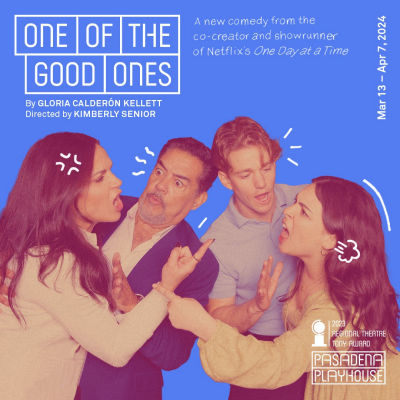

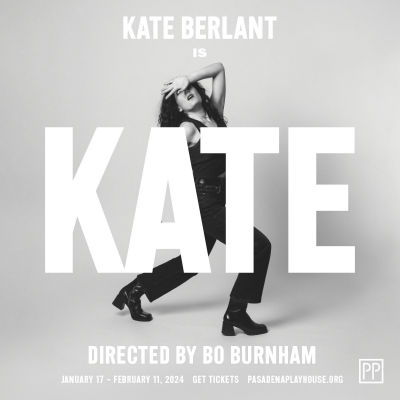

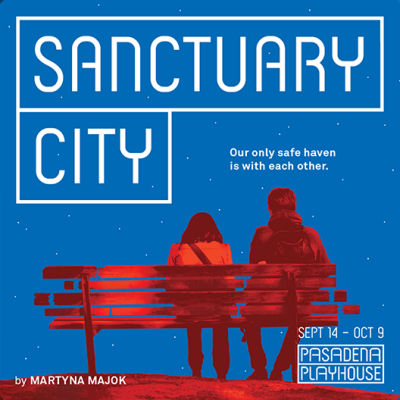

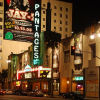


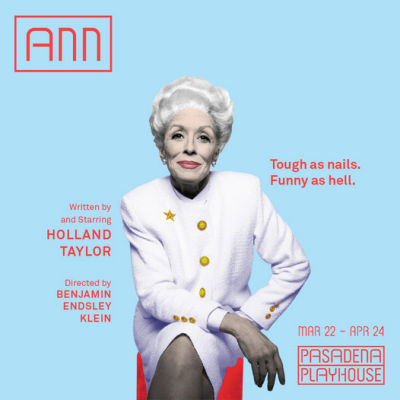




 I’ve enjoyed the music and the story of
I’ve enjoyed the music and the story of 



 I’m three for three.
I’m three for three.

 In the last two years, we’ve seen remarkable strides in the acceptance arena. We’ve seen homosexuals get the right to be married; we’ve been able to observe the transformation of Wheaties Box Heroes from one gender to the other. We’ve seen acceptance of a wide range of sexual preference in society, from no preference at all (asexual) to traditional preference to non-traditional preferences. We’ve seen similar understanding (perhaps not full acceptance yet) of the full range of gender identities. But this hasn’t been comfortable for many; arguably, many wish for those simpler days when the roles and nature of the sexes were much more separate, and those roles and orientations that went against “what nature intended” were best hidden from sight.
In the last two years, we’ve seen remarkable strides in the acceptance arena. We’ve seen homosexuals get the right to be married; we’ve been able to observe the transformation of Wheaties Box Heroes from one gender to the other. We’ve seen acceptance of a wide range of sexual preference in society, from no preference at all (asexual) to traditional preference to non-traditional preferences. We’ve seen similar understanding (perhaps not full acceptance yet) of the full range of gender identities. But this hasn’t been comfortable for many; arguably, many wish for those simpler days when the roles and nature of the sexes were much more separate, and those roles and orientations that went against “what nature intended” were best hidden from sight.
 Some weeks the news chum doesn’t theme, and you get stew at the end of the week. Other weeks, you get a multicourse tasty meal. This week is the latter. For our first course, some theatre news:
Some weeks the news chum doesn’t theme, and you get stew at the end of the week. Other weeks, you get a multicourse tasty meal. This week is the latter. For our first course, some theatre news:


 Did you ever look at a painting, and wonder about the story behind the painting? That was the question that
Did you ever look at a painting, and wonder about the story behind the painting? That was the question that  — why were they avoiding the play (I’m similarly disturbed about the fact that the audiences of color don’t come to traditional plays). The same shift was notable in the Waterfall audience — it skewed much more Asian than the typical Playhouse audience. As a result, I must make the comment I always make: Theatre is like music — it is either good or bad. It is not “Asian”, it is not “Black”, it is not “White”. It reflects and comments on situations that are set in a wide variety of communities. Audiences must make an effort to go to a wide variety of theatre that reflects diverse experience, and not only the shows that reflect their particular ethnic experience. This permits theatre to do its job, moving people to learn and think about how people react in various situations. End soapbox.
— why were they avoiding the play (I’m similarly disturbed about the fact that the audiences of color don’t come to traditional plays). The same shift was notable in the Waterfall audience — it skewed much more Asian than the typical Playhouse audience. As a result, I must make the comment I always make: Theatre is like music — it is either good or bad. It is not “Asian”, it is not “Black”, it is not “White”. It reflects and comments on situations that are set in a wide variety of communities. Audiences must make an effort to go to a wide variety of theatre that reflects diverse experience, and not only the shows that reflect their particular ethnic experience. This permits theatre to do its job, moving people to learn and think about how people react in various situations. End soapbox.
 Time for another post looking at theatre season announcements. Today’s post is triggered by the recent announcements of the
Time for another post looking at theatre season announcements. Today’s post is triggered by the recent announcements of the 

 Recently,
Recently, 
 You know you want to take your mother to dinner. But what will you talk about? Here’s a bunch of news chum stew items, accumulated over the last two weeks (I’ve been busy, what can I say) that might just do:
You know you want to take your mother to dinner. But what will you talk about? Here’s a bunch of news chum stew items, accumulated over the last two weeks (I’ve been busy, what can I say) that might just do:
 It’s Saturday, and you know what that means — time to clear out the saved links for the week. As always, these links are usually discovered through my reading of the papers and by what comes across my RSS feeds (which I’m now reading via
It’s Saturday, and you know what that means — time to clear out the saved links for the week. As always, these links are usually discovered through my reading of the papers and by what comes across my RSS feeds (which I’m now reading via 